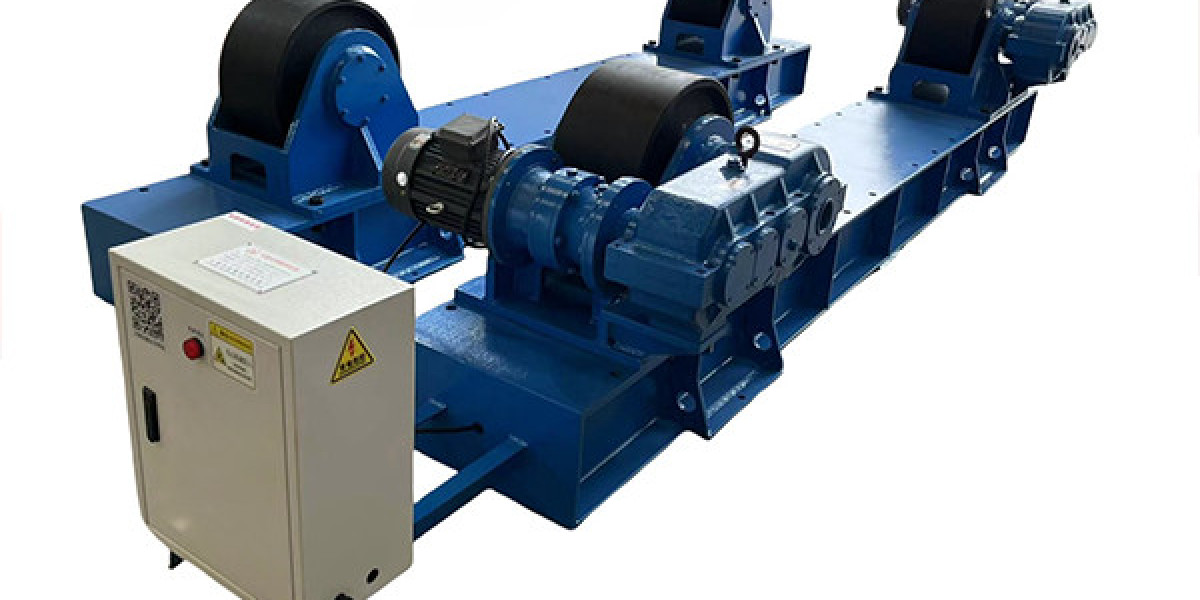In the realm of industrial manufacturing, particularly in the welding sector, the efficiency and precision of machinery play a pivotal role in determining the quality of the final product. One such essential piece of equipment is the bolt welding rotator, a device that facilitates the welding process by rotating workpieces to ensure uniform welds.
Bolt welding rotators are specialized machines designed to support and rotate cylindrical workpieces during the welding process. They are particularly useful in industries that require the welding of large components, such as pipelines, tanks, and structural steel. The primary function of a bolt welding rotator is to provide a stable platform for the workpiece while allowing for controlled rotation, which enhances the efficiency and quality of the welding operation.

Technical Principle
The technical principle behind bolt welding rotators revolves around the use of a roller system that supports the workpiece. The design typically includes a series of rollers that can be adjusted to accommodate different diameters of workpieces. This is achieved through the use of reserved bolt holes or screws that allow operators to modify the center distance of the roller group, ensuring a snug fit for various workpiece sizes.
The rollers themselves are often made from a steel-rubber combination, which provides a robust bearing capacity and strong driving capability. This combination not only enhances the durability of the rollers but also ensures that they can handle the weight and stress of heavy workpieces during the welding process.
Drive Mechanism
One of the standout features of modern bolt welding rotators, particularly those manufactured by Wuxi YuanPeng Machinery, is the incorporation of AC frequency conversion technology in the roller drive system. This technology allows for stepless speed regulation, meaning that operators can adjust the rotation speed of the workpiece smoothly and precisely.
The ability to control the speed of rotation is crucial in welding applications, as different welding processes may require different speeds to achieve optimal results. For instance, slower speeds may be necessary for thicker materials or specific welding techniques, while faster speeds might be suitable for lighter components.
User-Friendly Interface
Wuxi YuanPeng Machinery has also prioritized user experience in the design of their bolt welding rotators. The remote control box is equipped with a digital display that provides real-time feedback on the rotation speed of the workpiece. This feature is not only eye-catching but also intuitive, allowing operators to monitor and adjust the welding process with ease. The digital display enhances operational efficiency by providing immediate access to critical information, reducing the likelihood of errors during the welding process.
Operation Process
The operation of a bolt welding rotator involves several key steps, each of which is designed to ensure safety, efficiency, and precision in the welding process.
Step 1: Setup and Adjustment
Before beginning the welding operation, the operator must first set up the bolt welding rotator. This involves adjusting the roller group to accommodate the specific diameter of the workpiece. Using the reserved bolt holes or screws, the operator can modify the center distance of the rollers, ensuring a secure fit for the workpiece.
Step 2: Securing the Workpiece
Once the roller group is adjusted, the operator places the workpiece onto the rollers. It is essential to ensure that the workpiece is securely positioned to prevent any movement during the welding process. The steel-rubber combination rollers provide excellent grip, minimizing the risk of slippage.
Step 3: Speed Adjustment
With the workpiece in place, the operator can use the remote control box to set the desired rotation speed. The AC frequency conversion technology allows for smooth adjustments, enabling the operator to find the optimal speed for the specific welding application.
Step 4: Initiating the Welding Process
Once the speed is set, the operator can initiate the welding process. As the workpiece rotates, the welder can apply the welding torch or electrode, ensuring that the weld is applied evenly around the circumference of the workpiece. The controlled rotation provided by the bolt welding rotator allows for consistent weld quality, reducing the likelihood of defects.
Step 5: Monitoring and Adjusting
Throughout the welding process, the operator should continuously monitor the rotation speed and the quality of the weld. The digital display on the remote control box provides real-time feedback, allowing for quick adjustments if necessary. This level of control is crucial for achieving high-quality welds, particularly in critical applications.
Step 6: Completion and Inspection
Once the welding process is complete, the operator can stop the rotation and carefully remove the workpiece from the bolt welding rotator. It is essential to inspect the welds for quality and integrity, ensuring that they meet the required standards. Any defects should be addressed promptly to maintain the overall quality of the final product.
Conclusion
Bolt welding rotators, such as those offered by Wuxi YuanPeng Machinery, are indispensable tools in the welding industry. Their technical principles, including adjustable roller systems and advanced drive mechanisms, enhance the efficiency and quality of welding operations. The user-friendly interface, featuring a digital display for real-time monitoring, further simplifies the welding process, making it accessible for operators of all skill levels.
As industries continue to evolve and demand higher standards of quality and efficiency, the role of advanced machinery like bolt welding rotators will only become more critical. By understanding the technical principles and operational processes behind these machines, manufacturers can leverage their capabilities to produce superior welded products that meet the rigorous demands of modern industry.
https://www.resizeglobal.com/bolt-welding-rotator-technical-principle-and-operation-process.html








